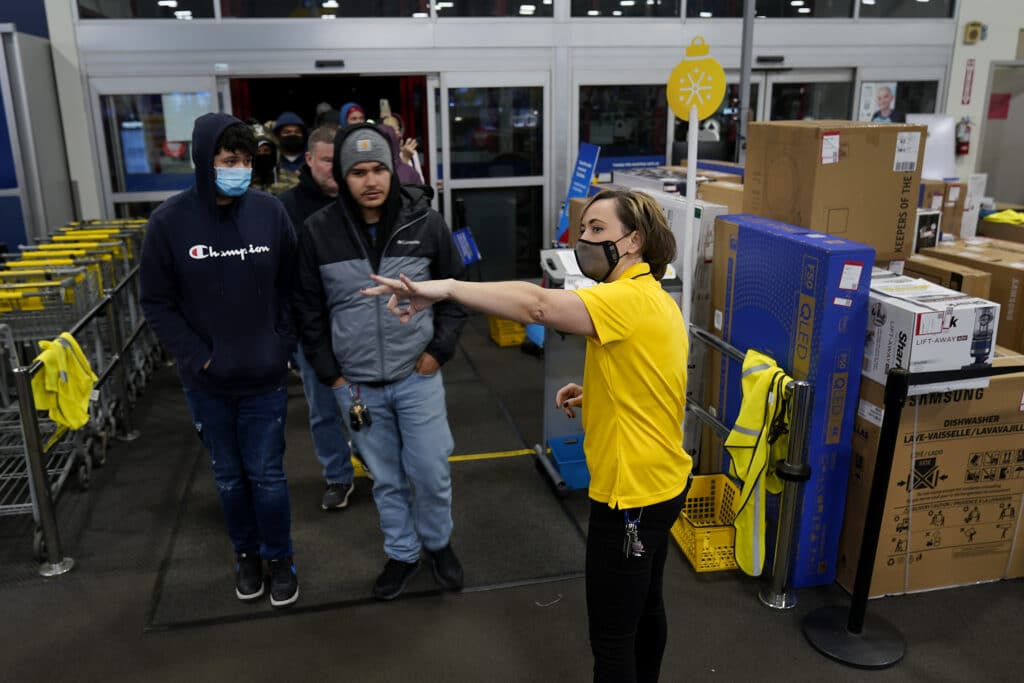Shoppers are out in full force this Black Friday, after a lull last year due to COVID-19. However, a lot of items are missing due to the supply chain shortage. The Associated Press has the story:
Traffic at Mall of America up over 200% from last year’s Black Friday
NEW YORK (AP) — On this year’s Black Friday, things almost seem normal.
Malls and stores report decent-sized crowds, if not the floods of people that used to fight over the latest toys and electronics — online shopping is much too common for that now, and discounts are both more subdued and spread out over the weeks leading up to Christmas, on both websites and in stores.
But out-of-stock items due to supply crunches, higher prices for gas and food, and labor shortages that make it more difficult to respond to customers are also causing frustrations for shoppers.
The country’s largest mall, the Mall of America, in Bloomington, Minnesota, reported overall traffic numbers at its opening on Friday were up by more than double compared to a year ago.
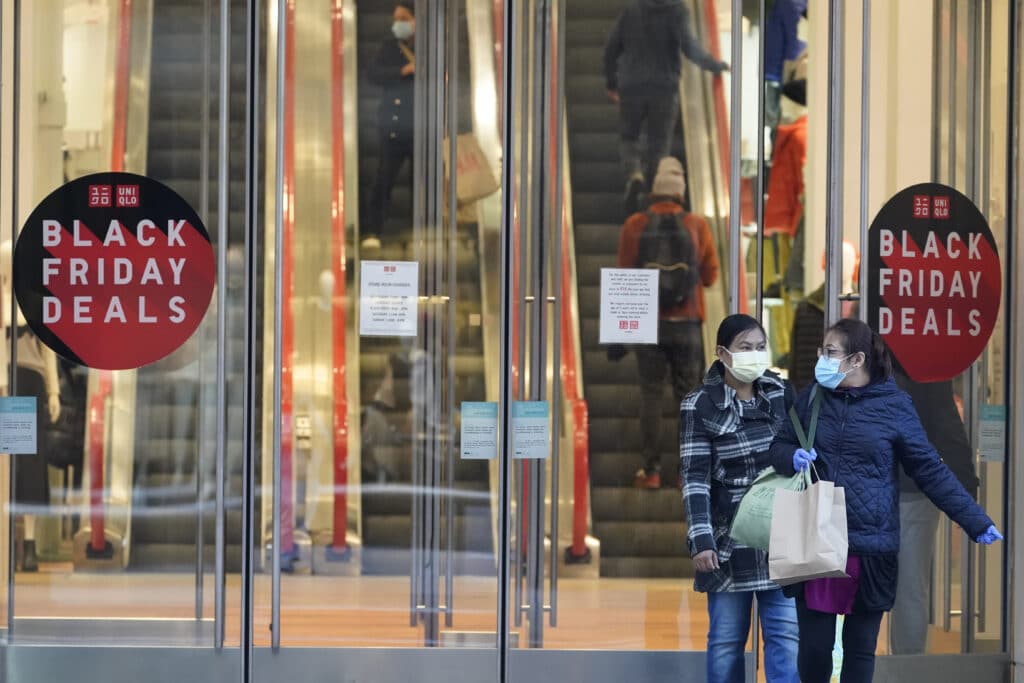
“We had a fantastic start,” said Mall of America senior vice president Jill Renslow.
Like many retailers and restaurants, however, staffing issues affected the mall and it had to trim the hours it was open.
So far, Black Friday sales — including online — were up 12.1% by morning, according to Mastercard SpendingPulse, which tracks spending across all types of spending including cash and credit cards. Steve Sadove, senior adviser for Mastercard called the start “impressive” but the sales were still tracking below its 20% growth forecast for the day.
Overall holiday sales are expected to grow this year. For the November and December period, the National Retail Federation, the nation’s largest retail trade group, predicts that sales will increase between 8.5% and 10.5%. Holiday sales increased about 8% in 2020 when shoppers, locked down during the early part of the pandemic, spent their money on pajamas and home goods.
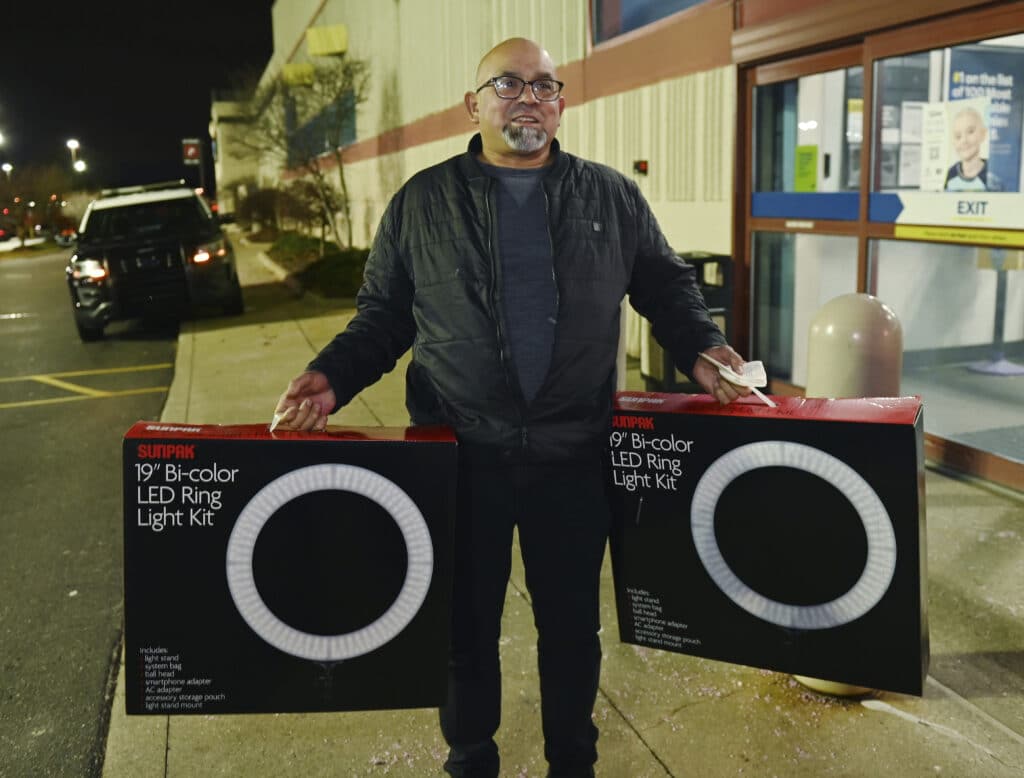
While Black Friday has a strong hold on Americans’ imaginations as a day of crazed shopping, it has lost stature over the last decade as stores opened on Thanksgiving and shopping shifted to Amazon and other online retailers. Stores diluted the day’s importance further by advertising Black Friday sales on more and more days.
The pandemic led many retailers to close stores on Thanksgiving Day and push discounts on their websites, starting as early as October. That’s continuing this year, although there are deals in stores as well.
At the Fashion Centre mall in the northern Virginia suburbs, window signs advertised 50% off boots at Aldo, 40% off full price items at J.Crew, and 30% off at Forever 21. But the sales floor looked different from years past, when tall stacks of merchandise used to be on display.
Big retailers like Walmart aren’t blasting “door buster” deals in their ads, said DealNews.com analyst Julie Ramhold. Meanwhile, smaller chains like Victoria’s Secret and Gap are having harder time managing supply issues. Victoria’s Secret said recently that 45% of its holiday merchandise is still stuck in transit.
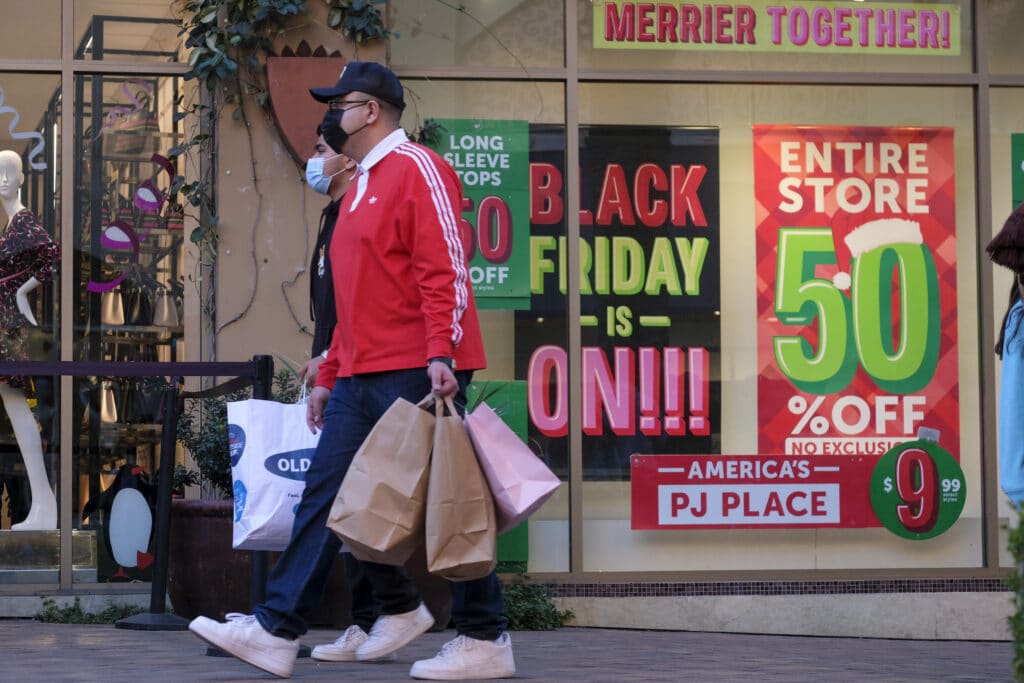
Supply chain hold-ups are a major concern this year, and both stores and shoppers are trying to find workarounds. Some of the biggest U.S. retailers are rerouting goods to less congested ports, even chartering their own vessels.
Macy’s CEO Jeff Gennette said the company is prepared. “We are deep and we are ready,” he said, noting inventory levels are up 20% compared to last year. “We are in good shape.”
Fears of not being able to get the items they want helped drive people back to physical stores.
Tim Clayburn was shopping at Fashion Centre in Pentagon City, Virginia on Friday morning because he wanted to make sure he could get the gifts he wanted for his relatives.
“Everyone is so worried about not having things shipped to you on time,” he said. “I’d rather just get stuff in person so I don’t have to worry about the shipping.”
That didn’t work out for everyone, though. “The thing that I came in for is already out of stock both in the store and online,” said Addi Vanderbeld while browsing Apple laptops at a Best Buy in the Denver suburb of Lone Tree. “Now I am looking around just to try and find something to make the best of getting up at 4 a.m. to get down here.”
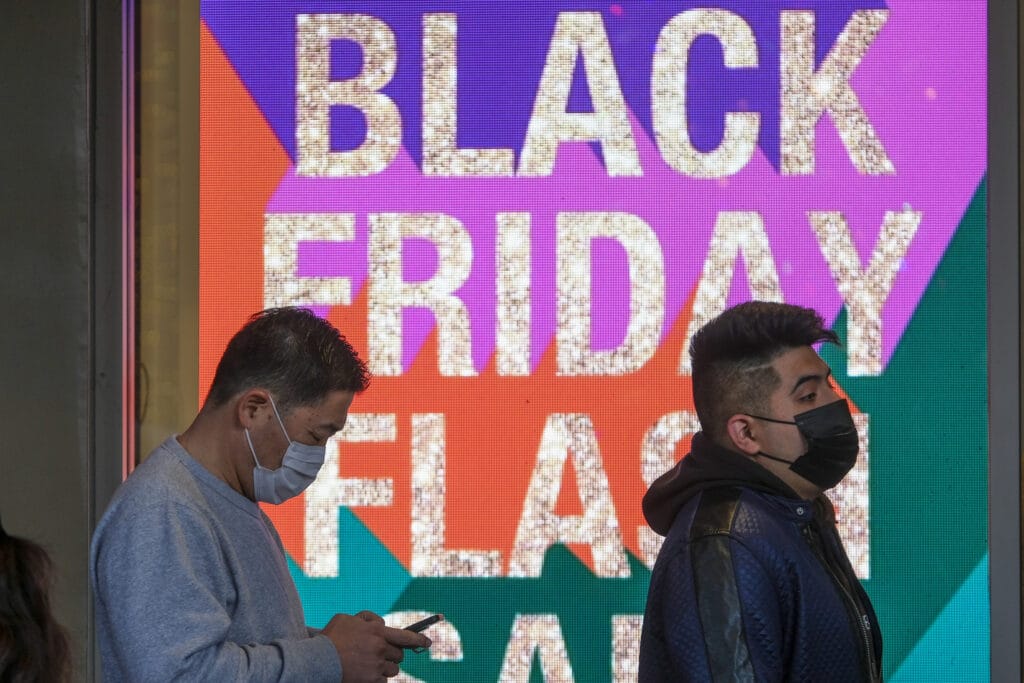
Still, experts believe Black Friday will again be the busiest shopping day this year. U.S. retail sales, excluding auto and gas, from this past Monday through Sunday are expected to increase 10% from last year and 12% from the 2019 holiday season, according to Mastercard SpendingPulse, which measures overall retail sales across all payment types.
Several malls on Long Island were busier than last year, but there was no frenzy, said Marshall Cohen of market research firm NPD Group. Across the country, there were roughly three dozen people in line at the Denver-area Best Buy when doors opened at 5 a.m., said shopper Edmond Kunath, which he found underwhelming.
“It is amazing how small the crowd is here this morning,” said Kunath, who was looking for deals on Apple AirPods headphones and a hard drive.
At Macy’s in Manhattan, the pandemic remained in sight — employees wore masks and many shoppers did too — but there was also a sense of celebrating the fun of shopping, of things returning to how they used to be.
Carol Claridge of Bourne, England, has been coming to New York for Thanksgiving-week shopping for 15 years, but skipped it last year because of the pandemic. The U.S. reopened to travelers from the U.K. earlier in November when it lifted pandemic travel bans.
“We had to wait a long time to do this,” said Claridge, who was looking at beauty gift sets on the first floor of Macy’s with a friend. “We are picking up anything we see that we like. We call it our annual shopping outing.”
Shoppers are expected to pay on average between 5% to 17% more for toys, clothing, appliances, TVs and others purchases on Black Friday this year compared with last year, according to Aurelien Duthoit, senior sector advisor at Allianz Research, with the biggest price increases on TVs. That’s because whatever discounts available will be applied to goods that already cost more.
Aniva Pawlowski got to Macy’s just ahead of the 6 a.m. opening with plans to buy shoes and coats. Shopping on Thanksgiving Day had been a family tradition, but she stayed home last year and just shopped online. Worries about shortages drove the New Yorker to shop in person and she plans to spend about $1,000 on holiday shopping, similar to years past, even though she’s concerned about rising costs for gas and food.
“Everything is expensive,” she said.
Online shopping remains huge, and sales are expected to rise 7% for the week after the massive 46% gain a year ago, when many shoppers stayed home, according to Mastercard. For the overall holiday season, online sales should increase 10% from a year ago, compared with a 33% increase last year, according to Adobe Digital Economy Index.
“What the pandemic did for retail was, it forced them to be better digital retailers,” said Cohen of the NPD Group. That means the day after Thanksgiving is no longer what it was. “With that comes the shortfall of Black Friday.”
By ANNE D’INNOCENZIO and TALI ARBEL
David Zalubowski from Lone Tree, Colorado and Parker Purifoy from Arlington, Virginia contributed to this report.

